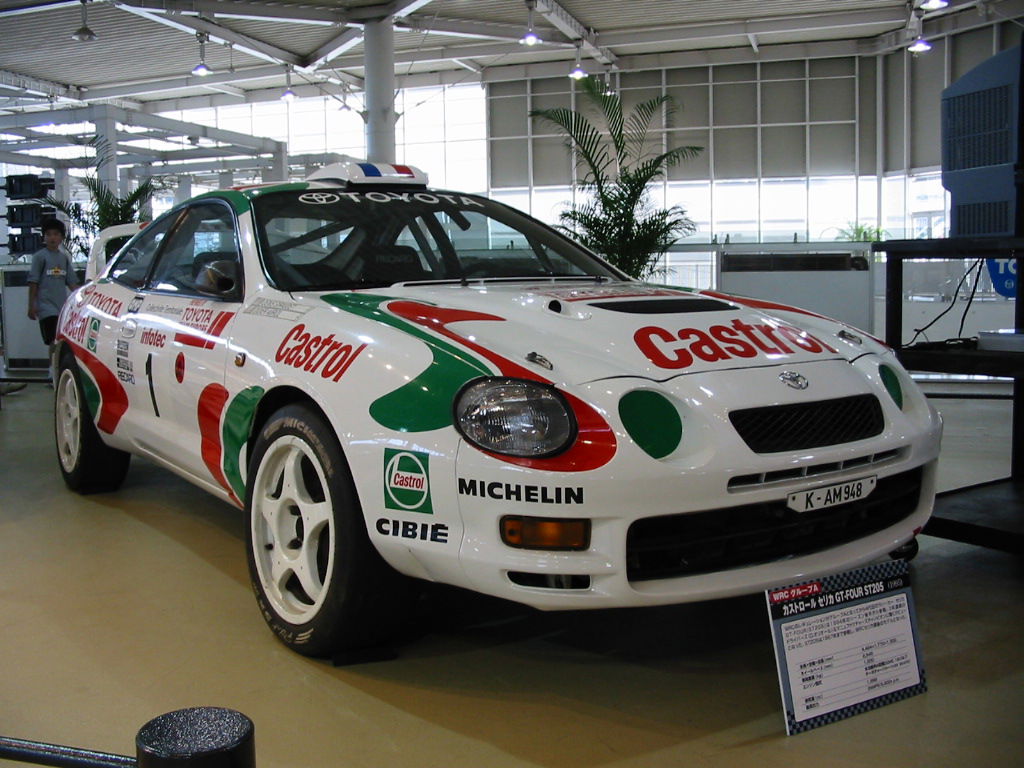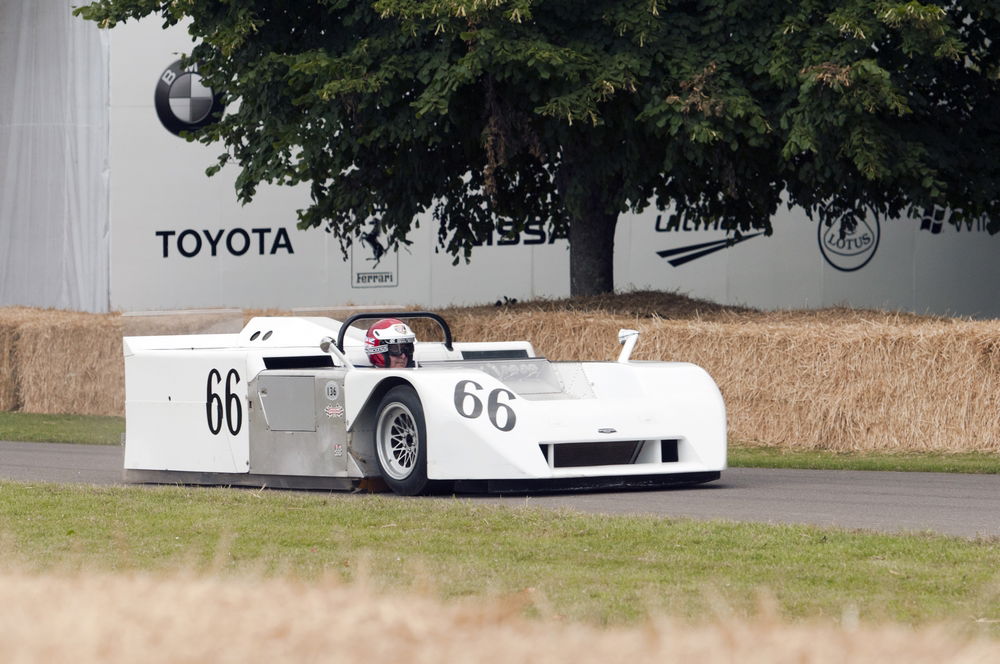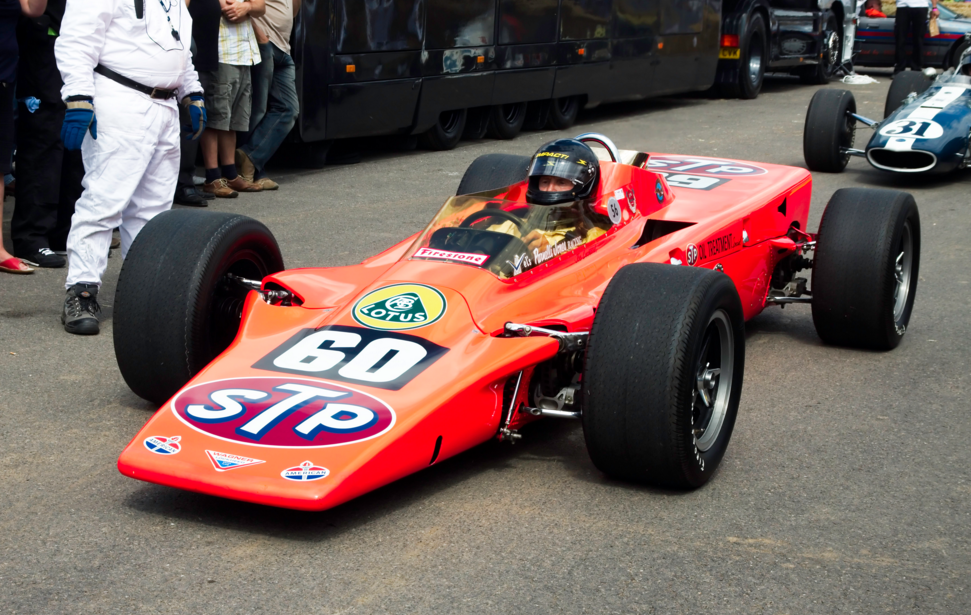5 Race Cars That Were Banned For Being Too Good

1. Brabham BT46B

The 1970s was a time of constant innovation in motorsport, and nowhere was this more evident than in Formula 1. Rules were relaxed allowing designers to experiment with huge air-boxes, crazy wing designs, and, in the case of the Tyrrell P34, two extra wheels. But it was towards the end of the decade where innovation really hit its peak.
After years of experimentation, Colin Chapman finally produced the first ‘ground effects’ Formula 1 car in 1977, the iconic Lotus 78. We could write a whole book on the genius of Chapman’s design, but in short, the car basically worked like one massive inverted aerofoil, creating huge amounts of downforce. Rubber skirts were also added to the car to increase the low air pressure under the low-sitting machine; the levels of aerodynamic grip were astounding.
This forced the legendary Gordon Murray, designer for rival team Brabham, to think somewhat laterally. He needed a way to create greater levels of downforce than the dominant Lotus, something that was incredibly tricky because Brabham used an awkwardly shaped flat-12 engine, rather than the Lotus’ brilliant Ford DFV. This meant that he didn’t have the space to use an inverted aerofoil design. Undeterred, Murray found a workaround in the rule book, which stated that a movable device primarily used to give an aerodynamic advantage was not allowed. So instead, he used a huge fan which was driven off the gearbox, which primarily cooled the engine, and also created a huge low-pressure zone beneath the car. Genius.
The car made its debut at the 1978 Swedish Grand Prix at Anderstorp and completely dominated. Team principal Bernie Ecclestone made the drivers qualify on full tanks to make sure that the team didn’t show its hand too early. In the race, Niki Lauda quickly overtook pole sitter Mario Andretti in the Lotus, and promptly cleared off into the distance, winning the race by a whole 34 seconds. Unfortunately, the constructors association called for the car to be withdrawn, with team owner Bernie Ecclestone complying. The car never raced again, and still holds the title of being the only F1 car with a 100 per cent win record.
2. Toyota Team Europe Celica GT-Four

There are teams that decide to bend the rules, and then there are other teams who decide to break them. Back in 1995, Toyota Team Europe (TTE) was the latter. After the madness of the Group B era, the FIA was determined to not let speeds get out of control. As a result, it required the top tier cars to run restrictor plates on their turbos reducing air intake by around 25 per cent; equating to around a 50bhp loss at the wheels.
The clever boffins in the Toyota race department developed a genius way to bypass the seals around the restrictor. When the car was on the move, the air restrictor would move just enough to render it ineffective. When the car came to a stop, cleverly designed springs would force the restrictor back into position. The design was so beautifully carried out that the car passed numerous technical inspections before someone knew what was up. Max Mosley, the president of the FIA, said: “It is the most sophisticated and ingenious device either I or the FIA’s technical experts have seen for a long-time. It was so well made that there was no gap apparent to suggest there was any means of opening it”
The FIA may well have been impressed with TTE’s ingenuity, but it took such infringements of the rule book very seriously; TTE was banned for the rest of the 1995 and 1996 season.
3. Chaparral 2J

Way before Gordon Murray came up with the brilliant Brabham BT46B, there was the Chaparral 2J. For a car that was designed at the end of the 60s, the 2J was an incredible piece of engineering. Like the BT46B, the Chaparral featured skirts - made out of Lexan, not rubber - and two fans which provided a huge amount of low pressure under the car. However, unlike the Brabham, the Chaparral used a separate engine (from a snowmobile) to drive the fans, leaving the Chevrolet V8 free to send all of its power to the rear wheels.
This combination gave the car an incredible advantage. Thanks to the fans producing a constant level of low pressure, regardless of the speed, the 2J had the same level of ‘downforce’ at 30mph as it had at 130mph. Unfortunately, the car suffered from mechanical problems throughout the 1970s Can Am season, which, let’s face it, was to be expected with such an innovative design. But McLaren and a number of other competitors had seen the potential of the ‘sucker car’ and called for the Sports Car Club of America (SCCA) to ban the technology, which the SCCA promptly did.
4. Lotus 56

Colin Chapman was an absolute genius. The man pioneered the use of struts as a rear suspension device, designed the first F1 car with a fully stressed monocoque chassis, and helped popularise ground effects - and that’s not even scratching the surface of his achievements. He didn’t do things by halves, and so it was with the Lotus 56.
Chapman had long been a fan of the Indianapolis 500, and had dominated the event in 1965 with Scot Jim Clark; when Parnelli Jones’ turbine car nearly won in 1967 (it broke down three laps before the chequered flag) he was bitten by the engineering bug once again. This led him to design potentially the most bonkers race car of all time.
The 56 was built from the ground up as an all new race car, designed to make the best use of its 500bhp Pratt and Whitney turbine engine. And if fitting a jet-engine into a car wasn’t enough innovation for you, Chapman sent the power to all four wheels - in 1968. Unfortunately, the car’s results don’t demonstrate what a brilliant machine it was. At the 500, three cars were entered with two breaking down and one being crashed. But in qualifying, Joe Leonard set a 171.558mph lap, which, at the time, was a track record. And the car would have been even faster if the US Auto Club hadn’t forced Lotus to limit the car’s air intake by 35 per cent.
Shortly after the 1968 Indy 500, the Auto Club banned the technology completely, along with all-wheel drive systems. A real set-back for what could have been a revolutionary technology.
5. Williams FW14

The Williams FW14 was argubly the first ‘modern’ F1 car. Huge budgets at the time allowed famous F1 designer Adrian Newey to try new and innovative approaches when designing what was his first car for Williams. The FW14 had a number of incredible features, including a semi-automatic transmission, an advanced (at the time) traction control system, and most pioneering of all, active suspension. Thanks to its cutting-edge tech and class-leading 3.5-litre V10 Renault engine, the Williams was effectively unbeatable, winning the 1991 constructors’ championship and 1992 drivers’ championship with with ease.
Things were not all rosy however. By 1993, the FIA was growing increasingly concerned by the costs being incurred by teams, and the insane corner speeds that these active suspension systems were generating. The horrifying crash of Alex Zanardi at Spa also brought safety concerns into the mix. Zanardi’s Lotus had a leak in its hydraulic system, causing it to ground out at the bottom of Eau Rouge, forcing him into the barriers at close to top speed. Not good.
In 1994, the FIA finally made the decision to ban the systems, on the grounds that they were unfair to a number of teams who couldn’t afford them. A good decision for cost cutting, a bad decision for innovation.

Comments
The Celica was banned just because they were cheating the rules, not because it was too good. Doesn’t really fit this article..
Audi Quartto?
How about the McLaren MP4/12 with the magical 4th pedal. A crude early traction control which braked the inner rear wheel on a corner.
That’s a prove of how using politics if you can outsmarted your rival. Seriously can you imagine what technology we have if they weren’t banned?
What about the Mazda 787B? It was banned for having an unfair power to weight ratio thanks to its rotary engine.
Ford rs200 evo, anyone? They banned group B because it was insanely fast!
Ok yeah I’m just hating on them because they’re overrated ignore me :p
cool, but where is the Plymouth Superbird?
Geart article! Please more of these!
Does the brab make brap noises?
Pagination